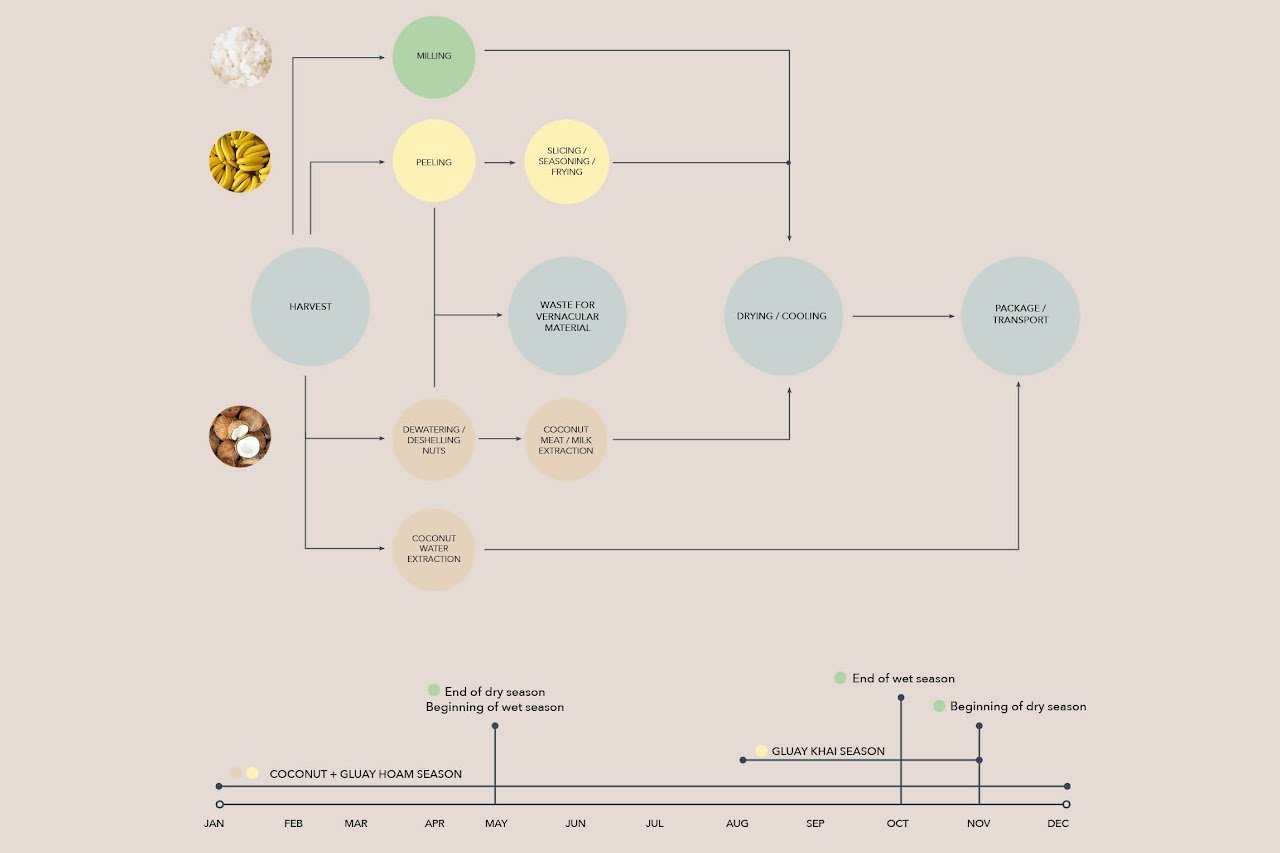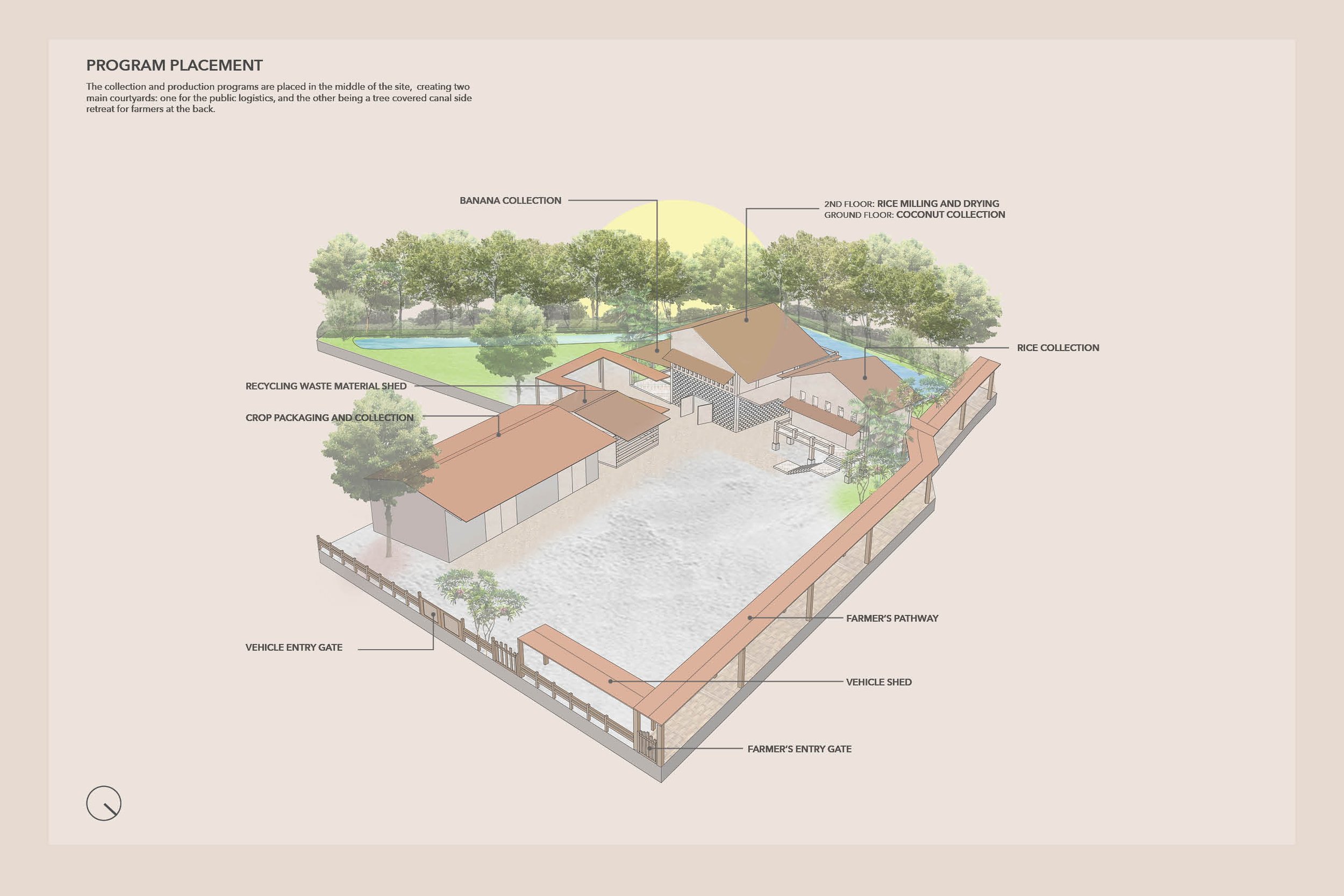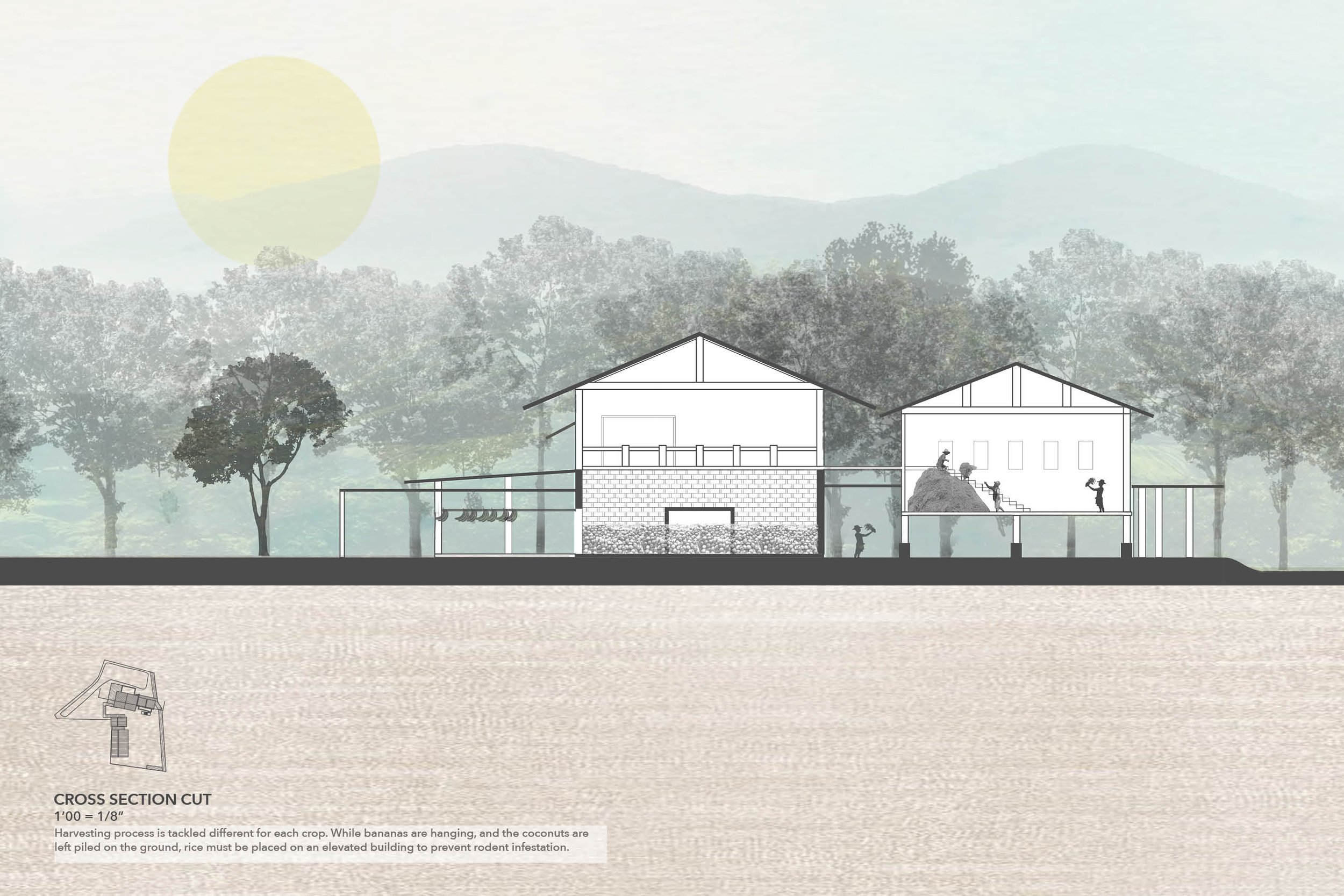Parsons BFA Design Studio 6 - ChiangMai Traveling Studio





Instructor: Brian McGrath, TA: Tommy Yang
Our project engages the individual and community bodies of the villagers met in field work in Chiang Mai, Thailand. Topics include village/landscape scale interventions where designers are increasingly engaging the social, political and economic realities of the city/rural interface as generative content for creating places for handicraft and making. Particular vernacular and indigenous building types provide students with tangible opportunities to engage the important issues that frame contemporary architecture and urbanism, such as local material sourcing, sustainability, adaptive reuse and upcycling. The project calls for a civic compound that incorporates handicraft and making, and is required to be a cluster of buildings around exterior courtyards that are protected from heat and monsoon rains.
Rice Craft Compound by Namra Khalid
Location: Ban San Si, Chiang Mai, Thailand
Largely immersed in rice paddy fields, Ban San Si is primarily a rice crop growing and harvesting village. The Rice Craft Compound is a civic village compound making center, that aims to make most of the rice crop by utilizing the bi-products to make crafts; rice paper, straw jewelry, hats, and weaved roofing sheets. The site has been carefully chosen, being only a 1 to 6-minute oxcart ride from all paddy fields in the village, a 1-minute truck ride to the highway to Chiang Mai City, and only a further 22-minute ride to the airport for exportation. The choreography of actions needed to make these crafts is carefully studied (check below) to compose a scheme for this compound. At the initial stage, a threshing utility is placed where separation of seed panicle and bi-products including straw, tiller, and root, takes place. Straw is further separated and taken to the straw weaving facility, where it is cut and sized. The large straws are taken to two beam looms to make weaved roofs for Lanna architecture while small straws are used to make jewelry and hats. The rest of the crop waste is then taken to make rice paper. Water canals run adjacent to the fence of the compound providing a fast and easy supply for rice paper water tubs. Soaking with soda ash is done in these tubs after which the mixture is then taken out using netted frames. From here it is transferred to paper making facility where decoratives are added, then dried, and passed through hot and cold presses. A rope runs across the exterior with paper hung for sun drying. In addition to this, the compound also has a sales shop, an office compartment, and a cooking/dining space.
The compound architecture embraces the pre-established rules of the Lanna architecture style so that it can be built by local Ban San Sians without professional supervision or the use of heavy-duty machinery.
